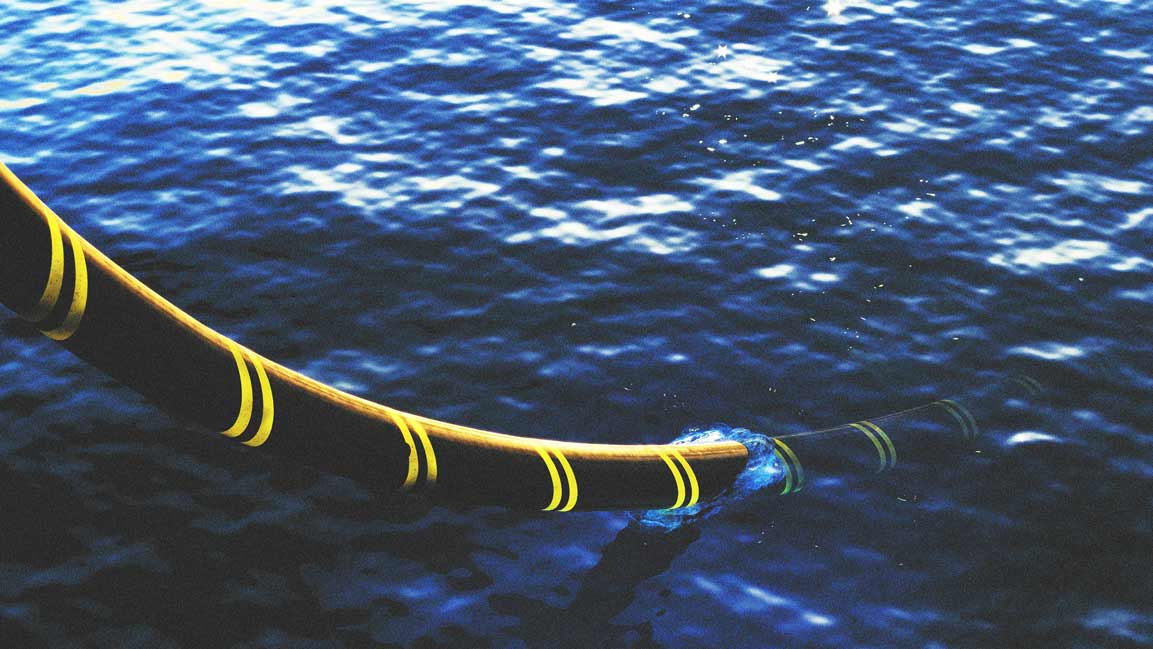- | 9:00 am
Air taxis, indoor forests, and other strange sights you’ll find in the airports of the future
Architects are already designing the next generation of airports, and they just might make you like traveling again.
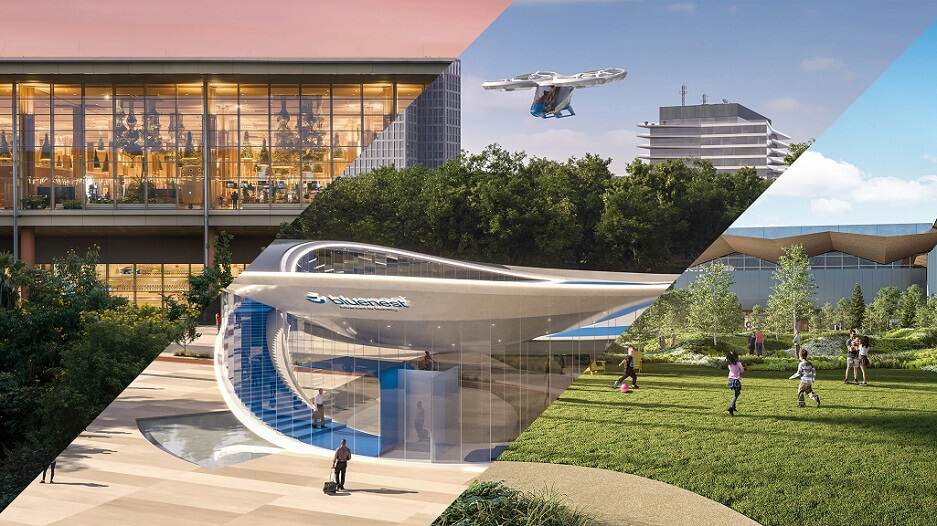
In 1962, Idlewild Airport (later renamed John F. Kennedy International Airport) opened its centerpiece building: architect Eero Saarinen’s TWA Flight Center. The sexy, curving structure, meant to capture the movement, transition, and soaring spirit of flight, was topped by four thin concrete shells supported at their corners by Y-shaped piers and connected by slender skylights. It resembled a large bird spreading its wings.
Inside, curved, concrete-clad spaces flowed into each other and then toward jetports via long concrete tubes. It quickly became a beloved icon of the Jet Age. But Boeing’s release of the wide-body 747 jet just eight years later—necessitating much larger berths and concourses—quickly made the terminal all but obsolete. By 2001 it sat as an empty shell (New York Times architecture critic Herbert Muschamp called it “a bird that has lost its flock”), which it remained until it was incorporated into the TWA Hotel in 2019.
The TWA Flight Center is a cautionary tale about how difficult it can be to design for airports. Inherently cutting-edge structures that take a very long time to design and build are often outdated shortly after they’re complete. Just walk through airports filled with iPad restaurant menus and see how big investments can quickly seem archaic.
Based on conversations with more than half a dozen experts, here is a step-by-step look into the crystal ball of airports, exploring what may be, ahem, landing in the next few years, and beyond. If the specialists are right—and they won’t be in all cases—things are about to change dramatically.
TRANSIT HUBS AND AIR TAXIS
Many airports have been reducing nightmarish car congestion (and its equally nightmarish greenhouse gas emissions) by installing intermodal hubs that leave cars on the periphery and connect (often via people movers or shuttles) to rideshare, mass transit, and so on. These experiences will continue to improve as connections become more seamless, allowing you to, for example, book all transit options at once, door-to-door.

Several in the industry project the next piece of this puzzle to be drone transport, aka air taxis; advanced air mobility (AAM); or eVTOL (electric vertical takeoff and landing) aircraft. Airport-based “vertiports,” where these unmanned aircraft would take off and land, would connect to the wider regional system of vertiports, replacing, for instance, long drives and short-haul flights.
Airports now planning eVTOL vertiports include those in New York, Orlando, Dallas, Philadelphia, Houston, Rome, Dubai, and Singapore, as well as in Orange County, California. Most are partnering with eVTOL developers like Joby Aviation, Ferrovial, Lilium, Eve Air Mobility, Archer Aviation, and Volocopter, who themselves are regularly teaming with airlines and car companies. In 2022, the European Union Aviation Safety Agency and the U.S.’s Federal Aviation Administration both published design guidelines for vertiports. The biggest barriers remain regulations for the vehicles themselves, as well as plans for charging infrastructure, which will be significant.
According to Christopher Brown, director of KPMG’s Global Strategy Group in Ireland, this is, indeed, happening. But it’s further off than many eVTOL manufacturers—who are trying to raise immense sums of capital—would like you to think. “We’re getting estimates from people whose careers depend on this technology being approved before their financing runs out,” Brown says.
And according to Paul Wheeler, director of aerial innovation at engineering firm WSP, it needs to be rolled out judiciously so as to avoid the same kind of air congestion that we now face on the ground. “If everyone moves to eVTOLS, then it may solve congestion temporarily, but then it will quickly come back,” he says. “We need to connect to every type of mobility—trains, buses, subways, cars, micromobility, etc. . . . A lot of people dream of The Jetsons, but we need to look at past mistakes and try to do it right now.”
AIRPORTS AS CITIES
Those who live in Asia and some parts of Europe may already be familiar with the concept of an “airport city,” a conglomeration of activity—retail, hotel, transit, leisure, and even office and residential—in and around an airport that makes arrival more humane and dynamic and sometimes serves as a destination for locals with no plans to take a flight.
Some of the most effective examples today include Singapore’s Changi Airport, whose shopping and leisure spaces—including Jewel, a massive indoor garden, entertainment zone, and shopping mall centered on a 130-foot-tall waterfall known as the Rain Vortex—are destinations across Asia; and Amsterdam’s Schiphol Airport, where stepping off the plane feels like entering a European train station and neighborhood.
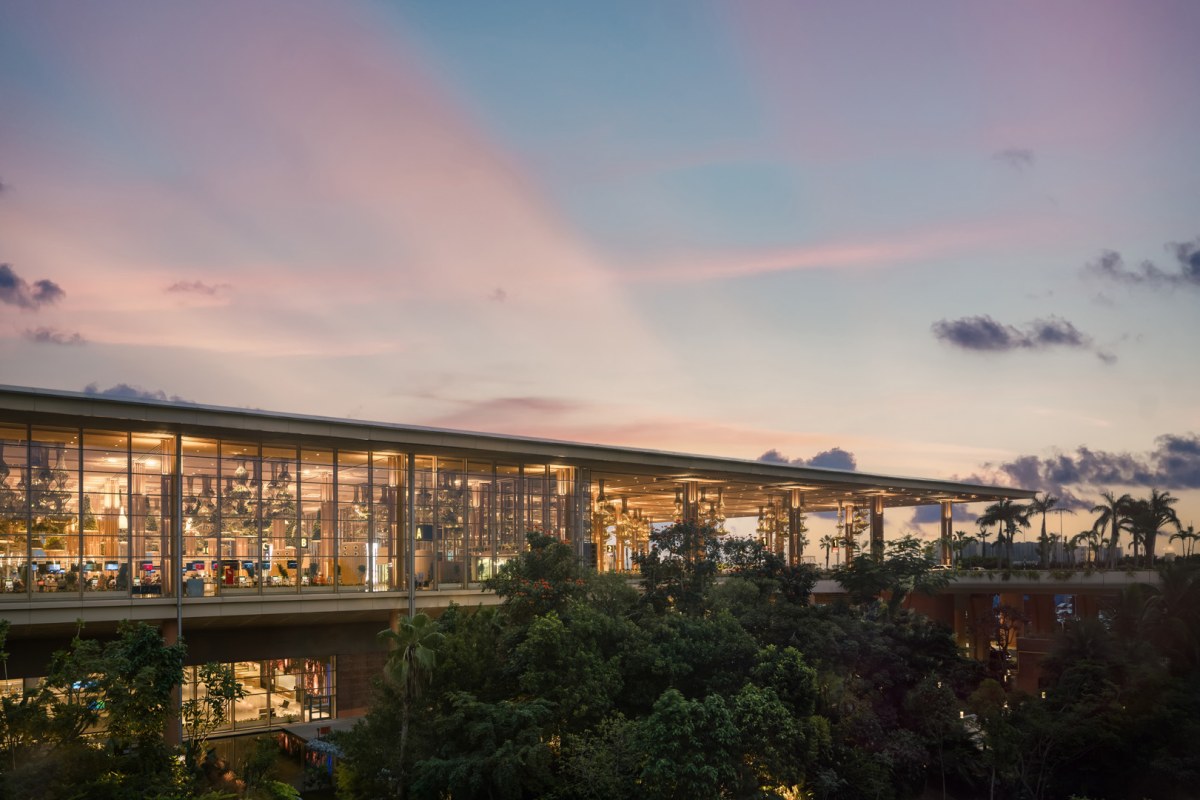
The new Kempegowda International Airport in Bangaluru (formerly Bangalore), designed by SOM, has no roads in front of its arrival terminal. Instead it is creating planted spaces, shops, restaurants, and entertainment. In many ways this is a back-to-the-future moment, as airports begin to provide entrance plazas, activities, and grand civic gestures that were early mainstays of airport planning, and were stymied—in large part—by automobile traffic. (Before it opened, Kennedy International Airport had originally planned a planted central plaza, for instance. That move was nixed by both airlines and road planners.)
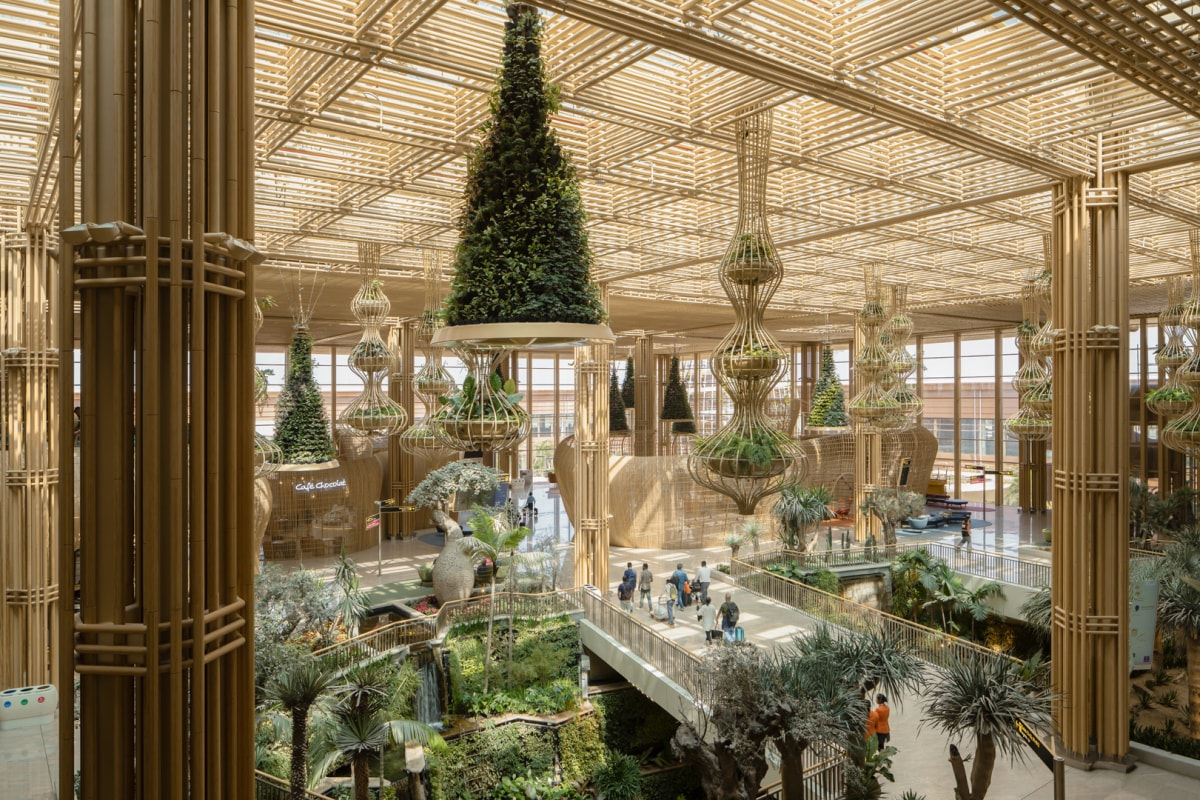
“There’s clearly a need for a more robust experience,” notes Cliff Bollmann, director of aviation and transport for Arcadis, a design and consultancy organization that has produced a wealth of information on the aviation sector. “You have such a diverse level of customer that you need something that speaks to every preference.” He adds, “Younger generations are much more experience-based, and this is what they are asking for.”
U.S. airports, Bollmann notes, are far behind on this trend, but the need to create more balanced revenue streams is pushing them to rethink this (particularly as fewer people use parking lots, which are a major airport income generator). Spanish architect Luis Vidal predicts that in the future, passengers will go through security as soon as they enter the airport edge, freeing them up to experience the airport city unencumbered by bags or the need to go through screening.
FASTER CHECK-IN AND BAGGAGE DROPS
Check-in has already been dramatically shifted via the mobile revolution. But for travelers carrying bags, it’s still a hassle. Emerging technology is set to shift this—particularly biometrics, which can identify passengers immediately via facial, retinal, or hand scans, and help them print a self-service tag. Another nascent trend is programming RFID (Radio Frequency ID) tags built into luggage, which means putting your bag right on a belt without even stopping to print a tag.

JFK’s new Terminal 1, for instance, will be fully biometric. “The goal is you don’t need a boarding pass or passport, you just zip along,” says Ty Osbaugh, global cities sector leader at Gensler, the terminal’s architect. Terminal 1’s entrance canopy will also be fitted with sensors that can personalize the experience for particular travelers via data collected from their smartphones, or filled out by passengers prior to their trip. Arup, meanwhile, has developed a speculative prototype called the “processing pod,” an automated kiosk where all check-in processes happen at once.
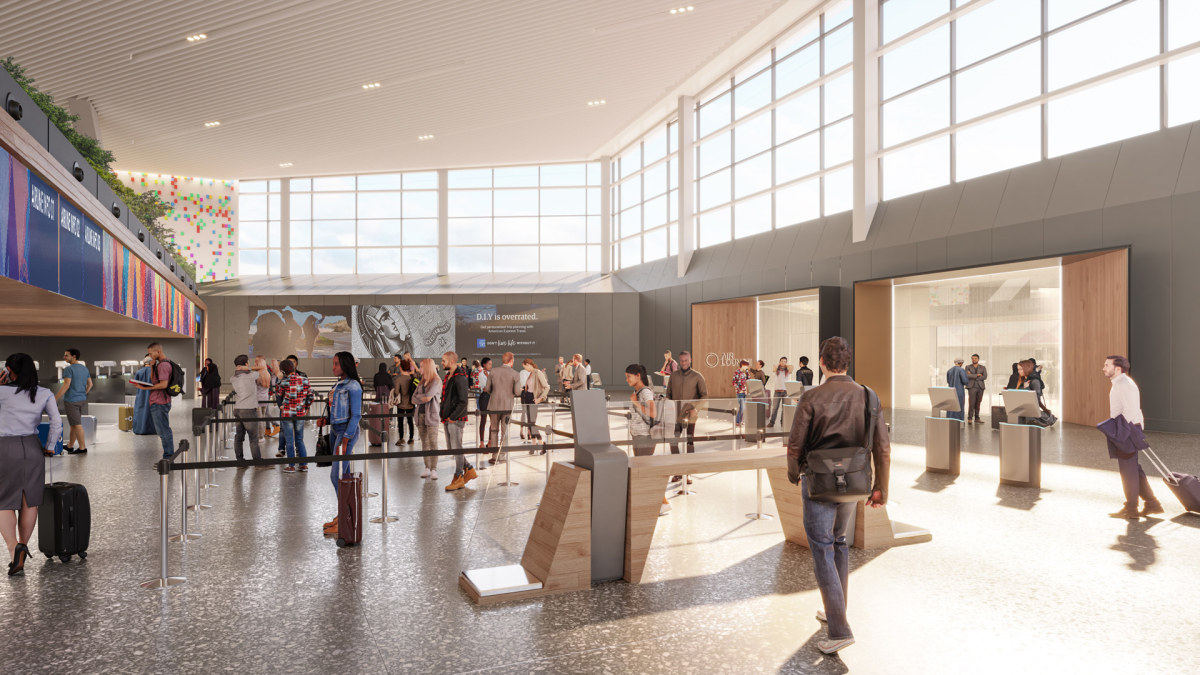
Another option is checking your bags before you even leave for the airport. Hong Kong International Airport and London Heathrow both allow passengers to check bags at designated locations in their respective cities. (The bags will be transported directly to their flights. And for arrivals, bags can be shipped directly to passengers’ homes or hotels.)
Another issue is getting bags to airplanes more quickly and reliably. The future on that front appears to be automation. Stansted Airport in the U.K. recently added 1.5 miles of track and 180 automated carts, designed by Beumer Group. According to the airport, bags reach planes in just six minutes. Other improvements, experts say, entail more advanced use of artificial intelligence for baggage management and baggage staff scheduling, and greater automation throughout the process, even getting bags from carts to planes.
“I’ve felt inbound baggage processing has technically lagged behind passenger processes,” says Jim Cherry, senior aviation consultant at design and engineering firm Arup. “There’s still not a big difference in how we’ve handled baggage since the 1960s. It’s incredible the amount of human intervention it still takes to move baggage into canister, into plane, onto truck, onto belt. I would like to see a lot more thought given to baggage processing.”
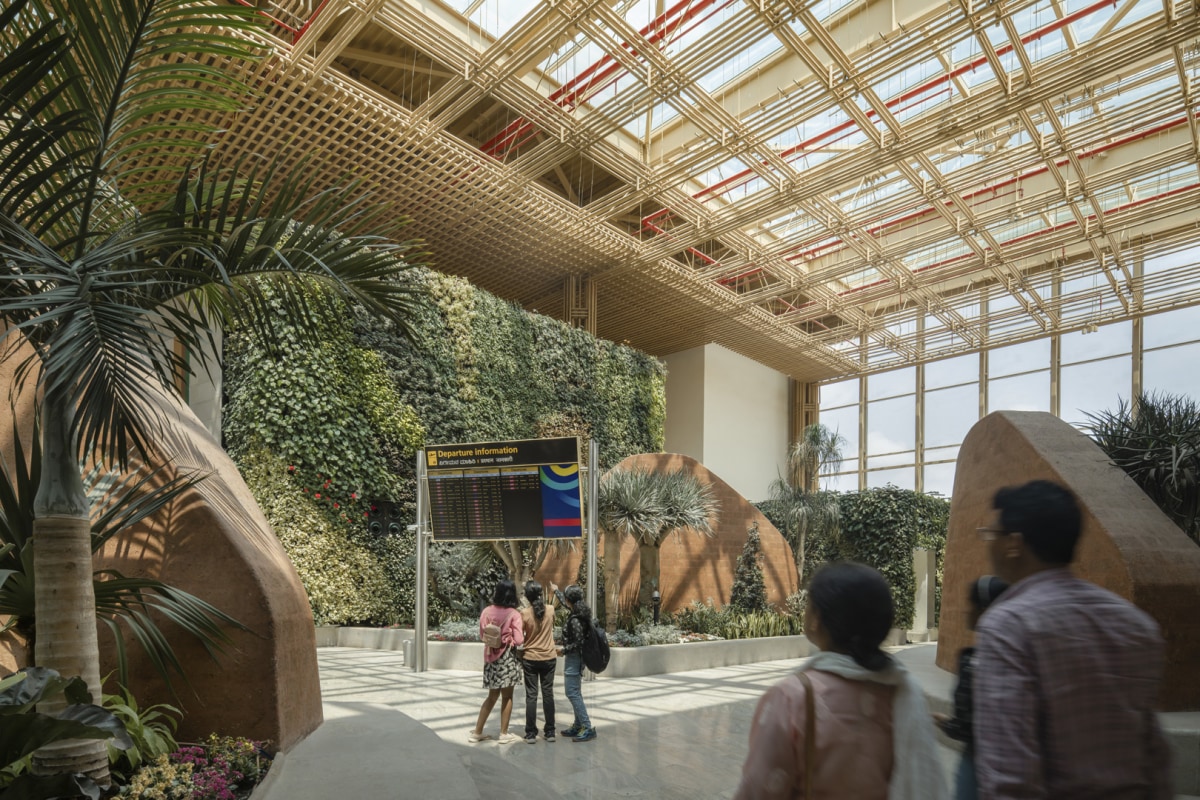
Of course, we’ve all seen the hiccups facing automation, and then there’s the human side, including severe job disruption and loss. “How do you retrain your workforce to adapt to these new realities?” asks Peter Lefkovits, a principal at SOM. Several experts believe that workforces could be effectively retrained, while Arup’s Cherry posited that the more pressing issue at airports is a shortage of staff, which automation could help remedy.
Lefkovits also wonders about the ever-increasing load of data that airports collect as they more seamlessly adapt experiences to passengers. “Using data means airports can provide a better, more tailored experience. But the flip side is what are they using? What are they using it for? Who are they sharing it with? Where does it go?”
EASY SECURITY SCREENING
There’s nothing as disruptive to airports as security. In the not-so-distant future it could be transformed via technology like biometrics, which could soon replace printed or digital identification. (Some services, like Clear, have already been providing this for years.) Partnered with automated screening technology, these advances could pave the way for you to walk through without stopping—like E-ZPass for airports.
In the U.S., the Transportation Security Administration has unveiled a pilot program called Screening at Speed, which is testing self-screening prototypes like pods and tunnels that could do away with stops at X-ray machines. (In most cases you’ll still have to drop your luggage on a belt.) Someday, say most experts, you will be able to pass through security with your bags in tow as well.
Arup’s Cherry calls this walk-through scenario “the holy grail” of security advancements, while Arcadis’s Bollman adds that “things that provide least resistance and add value to your journey are going to stick and get further developed.”
Another tool is the opportunity to make appointments for security rather than waiting in line—kind of like fast pass at amusement parks. Already Seattle-Tacoma International Airport has started its “Spot Saver” program, allowing customers to choose slots between an hour and four hours before their flights. (They recommend booking at least five days before a flight.)
Lefkovits points out that minimizing check-in and baggage facilities will free up space to create far better experiences, like, for example, making terminals more seamless, providing views directly to the planes themselves, and much more. “It opens up the idea of what an airport is,” he says.
ARCHITECTURE AND GREEN SPACE
Inside, airport terminals and concourses are rarely pleasant places to be. (Why do you think airline lounges are so popular?) But they’re improving by leaps and bounds—even at smaller, regional airports. As passengers demand higher standards, timeless approaches like natural light, easy orientation, natural materials, and even nature itself, are making a comeback. The new LaGuardia Airport, for instance, now boasts huge window walls with sweeping views of the Manhattan skyline, and passengers tend to find their gates intuitively, not via a warren of signage.
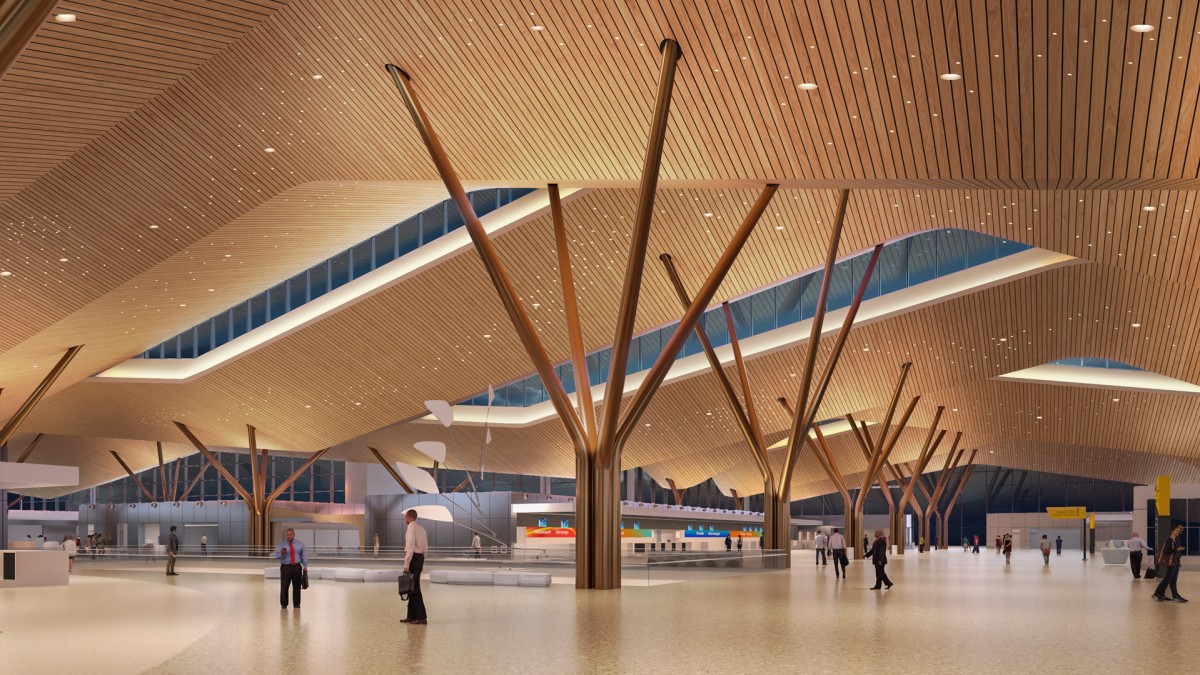
“It’s going faster into providing a voluminous, legible space flooded with natural light, where the passenger feels freer—where they can amble through the terminal making their own choices,” Vidal says. His cavernous new terminal for Pittsburgh International Airport is covered in locally sourced wood surfaces, and opens to views of thickly planted external terraces and gardens. Copper-colored columns resemble a scattered forest, and the ceiling’s circular lighting spots are arranged to resemble a constellation of stars at night.
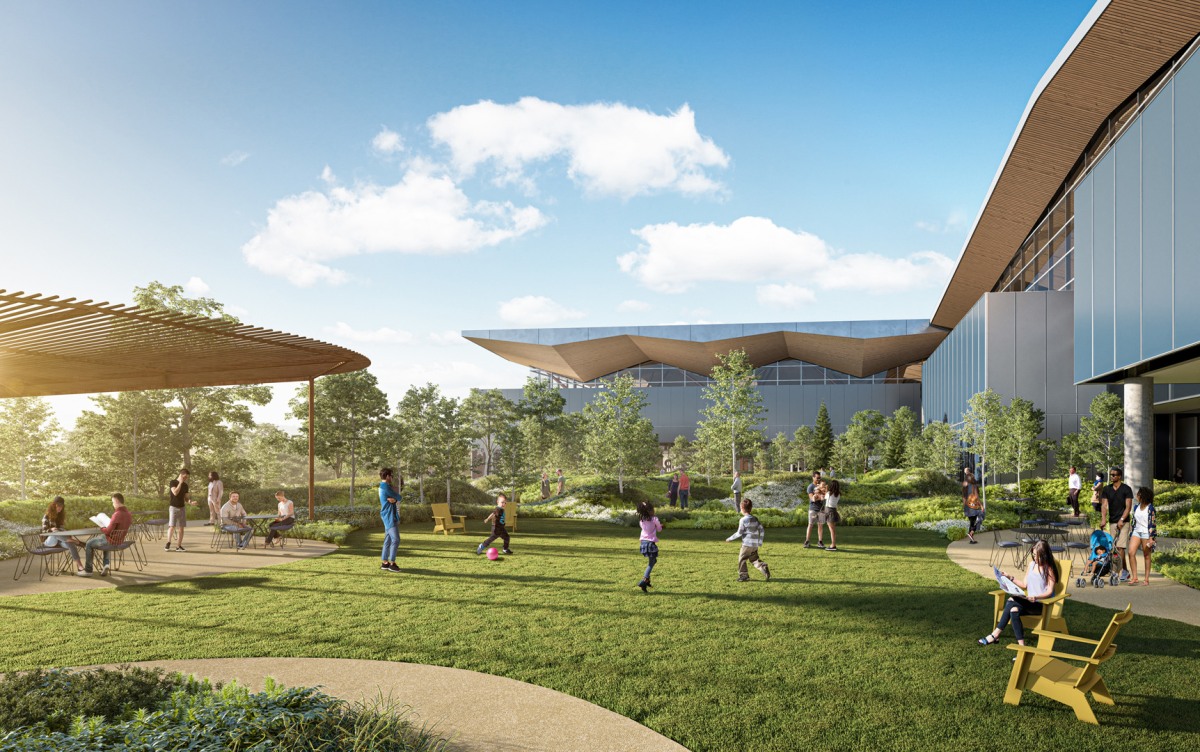
For now, Singapore Changi’s Jewel is the gold standard, with its four levels of gardens, including Forest Valley, with its more than 2,000 trees and palms. But Kempegowda could easily overtake it. While not all phases are complete, it already boasts thickly planted outdoor plazas, indoor spaces filled with trees, terraces, locally made hanging planters, a large lagoon, and—between the terminal building and the concourses—a 300-foot-wide outdoor greenbelt filled with lush landscaping that is now visible via large windows and will soon allow passengers to walk into it via elevated footpaths.
“From the moment you’re dropped off you’re connected to natural settings in different ways,” Lefkovits notes. “We’re very lucky that this is a client [Fairfax India Holdings] that had the ambition to ask us to design a terminal in a garden.” Incorporating outdoor elements around airplanes means smart planning, like setting such spaces away from runways, and creating buffers via buildings and landscapes.
But nature can be incorporated in more low-key ways, too. Grand Rapids, Michigan, and Jackson Hole, Wyoming, for instance, both offer fireplaces in their hold rooms. Several airports have small interior gardens. And you’ve probably seen rocking chairs that allow you to look out at the tarmac and soak up the natural light.
Retail, too, is changing quickly. As passengers now shop for their generic items online, offerings on-site are increasingly unique—and geared toward local businesses versus global brands, whether that be shopping or eating. “We’re moving away from things you can find in all corners of the world,” Bollman says. And as things change faster (and smaller businesses give the airport a try before going all in) concourses will become less about fixed location and more about temporary pavilions, not connected to the walls, say most experts. Other improvements are piling up quickly, and could become norms, including more public art, noise-reduction programs, meditation rooms, and views to cities and natural features.
SUSTAINABILITY AS AN AMENITY
It’s hard to imagine any airport, with its gas-guzzling jets, massive energy needs, and intense passenger burden, being sustainable. But as the climate crisis has intensified and governments have cracked down on emissions, airports are heading toward a greener future. Kempegowda, for instance, is aiming for a LEED Platinum rating, the highest mark that the U.S. Green Building Council awards. That’s thanks to passive strategies like abundant but strategically tempered natural light (for instance, it filters through bamboo surfaces), renewable materials, localized air-conditioning (in which only the first 12 to 15 feet above the ground get conditioned), and rainwater reuse, via the site’s lagoon.

In New York, HOK’s LaGuardia Terminal B was the world’s first airport project to achieve a LEED Gold rating. Gensler’s JFK Terminal 1, which may receive LEED Gold or LEED Platinum, is designed to minimize energy needs from the grid in case of emergencies. Its entire roof surface will be covered by photovoltaics, whose energy will be stored via batteries. It also features a rooftop rainwater capture system; localized, chilled beam heating and cooling; and more. To prepare for sea level rise, the entire building was elevated on fill above the the local floodplain.

BETTER AIRPLANES
As Saarinen’s TWA Flight Center proved, airplanes themselves have long been the most dramatic disruptors of airport terminals. For now, as airlines emphasize fuel economy, planes no longer seem to get bigger, like they did in the midcentury. But new shifts are in store. While developments like the return of supersonic aircraft (getting you across the country in half the time) could change the flying dynamic, the most dramatic shifts are related to energy and to takeoff and landing.
Most experts predict a staged shift into more sustainable energy sources. A key near-term solution, says WSP’s Wheeler, is sustainable aviation fuel (SAF), meaning non-petroleum-based renewable feedstocks, including the food and yard waste portion of municipal solid waste, woody biomass, fats/greases/oils, and other feedstocks. SAF is already being integrated with airport fuel supply in places like Los Angeles, San Francisco, Amsterdam, Helsinki, and Singapore. Wheeler says a medium-term solution is electric, which today is limited to smaller aircraft and to limited power source supply (not propulsion) in larger jets. Long-term solutions include hydrogen propulsion, which Airbus is already developing.
But these shifts, while welcome, may not impact airports as much as the evolution of takeoff and landing. Vertical takeoff and landing jets are a possibility, but most experts say they are a long way off. eVTOLs, according to many, are not, and could in fact replace much of airports’ regional functions. According to McKinsey, advanced air mobility companies received $4.5 billion in funding in 2023, and their arrival as a legitimate industry is imminent.
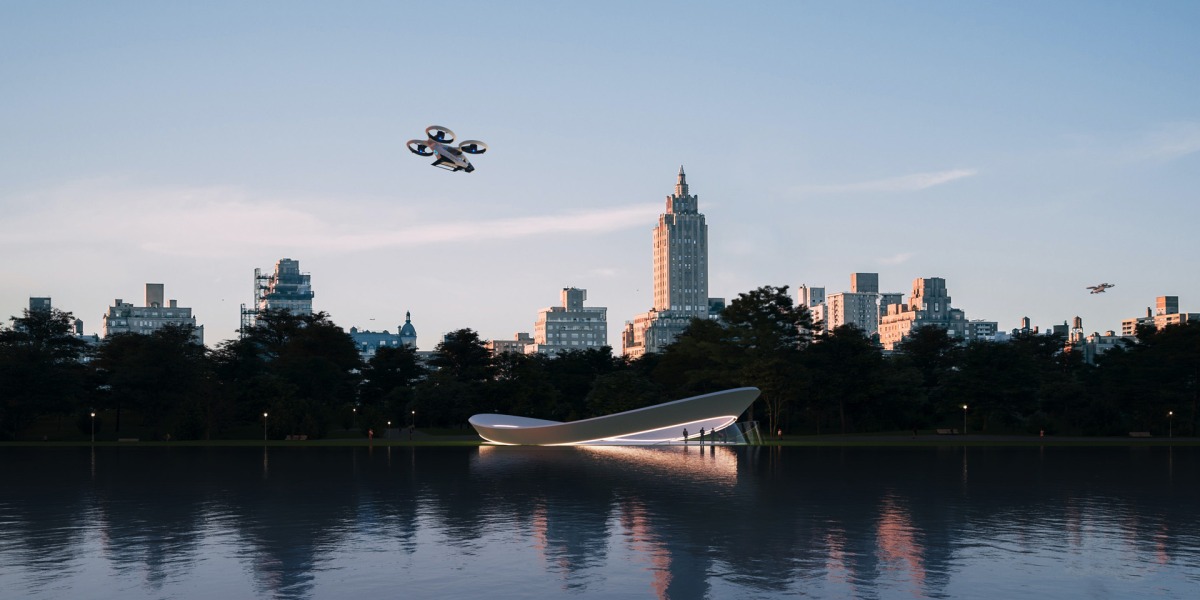
“Flying taxis are gonna happen. The question for me at the moment is when it’s going to happen—not if,” said Benedikt Kloss, associate partner at McKinsey’s Frankfurt office, in the report Advanced air mobility in 2030. KPMG’s Brown predicts the technology will reach scale by 2040. Whenever it happens, these vehicles’ ability to take off and land vertically could someday allow both vertiports and airports to be located closer to cities, or even in city centers. And with advancements in energy and technology, they could potentially become much larger. That’s when you start to wonder whether continued investment in faraway airports is dicey.
“It’s the Wild West right now,” Wheeler says. “You have this new generation of aviation that could shift everything.”
But while technology companies move headlong into the future, the airport industry, reminds KPMG’s Brown, is cautious and slow, by necessity. “That’s largely because of safety,” he says. “Boeing is a reminder that you can see what happens when people try to rush things.”












